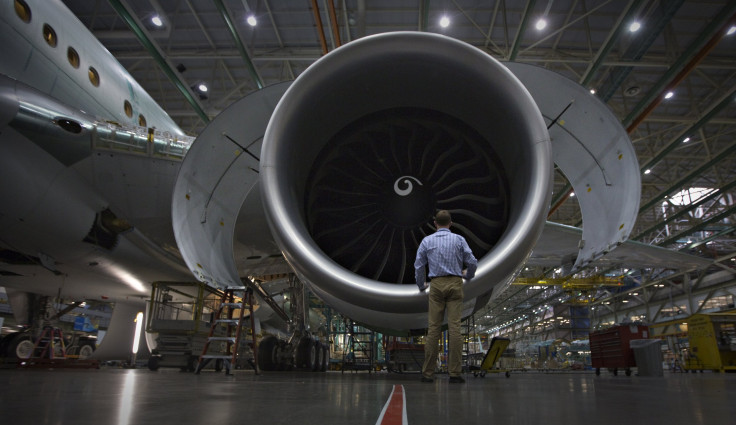Economy: US Q1 GDP Rises 2.5 Percent, Misses Forecast As Economic Growth Momentum Slows

The U.S. economy failed to gain as much steam as expected in the first quarter, stoking fear that economic growth could slow further as the impact of automatic government spending cuts kick in. The lackluster growth suggests the Federal Reserve is not ready to take its foot off the pedal just yet.
The nation’s gross domestic product, a measure of all goods and services produced in the economy, advanced at an annualized pace of 2.5 percent between January and March, according to a preliminary estimate from the Commerce Department. Economists polled by Reuters expected the world’s largest economy to grow at a pace of 3 percent in the first quarter of 2013, after growth nearly stalled at 0.4 percent in the fourth quarter of last year.
The U.S. economy has now grown for 15 consecutive quarters, but the average pace -- just above 2 percent annually -- is weak by historical standards.
“Few realize that GDP data for almost all the early quarters of recent recessions have been revised down dramatically,” said Lakshman Achuthan, chief operations officer of Economic Cycle Research Institute.
“Recall that the GDP release on Aug. 28, 2008 – with the economy eight months inside the Great Recession – revised second-quarter 2008 GDP growth to 3.3 percent from 1.9 percent, up from 0.9 percent in the first quarter of 2008. But both of those data points, as well as GDP data for the first two quarters of the 2001 and 1990-91 recessions, were revised by 2 to 4 percentage points over time. This is how real-time data often behave during recessions. Furthermore, year-over-year nominal GDP growth at or below 3.7 percent has occurred only in recessionary contexts. The first quarter 2013 read is 3.4 percent, the second straight quarter below 3.7 percent.
Other economists see fiscal drag as a significant near-term risk to the U.S. growth outlook.
Michael Hanson, senior U.S. economist at Bank of America Merrill Lynch, expects the impact of the fiscal cliff deal and the sequester to reduce growth to just 1.3 percent in the second quarter and result in around half a million job losses and 1.5 million furloughs of government employees.
Consumer spending, which accounts for more than two-thirds of U.S. economic activity, was the primary driver of growth in the first quarter. Personal consumption expenditures accelerated from 1.8 percent to 3.2 percent -- the fastest pace since the end of 2010.
However, with the decline in incomes, this means that the saving rate fell to 2.6 percent in the first three month of this year, from 4.7 percent in the fourth quarter. The expiration of the payroll tax cut led to a 5.3 percent annualized drop in real disposable incomes.
Business investment increased by a modest 2.1 percent, after a massive 13.2 percent annualized gain in the final quarter of last year.
The housing market remained a bright spot for the economy. Residential fixed investment -- which includes home building and household improvements -- jumped 12.6 percent during the first quarter, which was the third consecutive double-digit quarterly gain. Housing added to growth last year for the first time since 2005.
Government spending contracted by a further 4.1 percent, led by an 11.5 percent drop in defense spending, which comes on the heels of a 22.1 percent slump in the final quarter of last year. The drop in government spending over the past two quarters is the biggest six-month contraction since the Korean war ended.
“With the sequestration spending cuts beginning to bite, we could see yet another contraction in government spending,” Paul Ashworth, an economist at Capital Economics, wrote in a research note.
Net external trade subtracted 0.5 percent from overall GDP growth, while inventories added 1 percent. In both cases, those contributions were almost the mirror images of what happened in the fourth quarter of last year.
The smaller-than-expected first-quarter growth and the deterioration in the incoming economic data for March will, at least temporarily, prevent the Fed from slowing the pace of its monthly asset purchases. The U.S. central bank is widely expected to keep purchasing bonds at a pace of $85 billion a month.
In the March minutes, a number of Fed officials thought quantitative easing, or QE3, could be slowed if not stopped this year. Much has changed since that meeting in mid- March, however, with the economic data weakening notably. Nonfarm payroll employment increased by less than 100,000 in March, compared with an average of more than 200,000 in the four months before that. Retail sales declined last month as well and the activity surveys show a marked drop off.
Soft activity data has resulted in more cautious speeches of late. “Many participants” favored two conditions to slow the purchase pace: a better overall outlook for the labor market, and “confidence in the sustainability of that improvement.”
Michael Hanson, senior U.S. economist at Bank of America Merrill Lynch, thinks most Fed officials will need to see around two quarters of solid growth and employment data before they begin tapering. In his view, that likely won’t happen until early next year.
© Copyright IBTimes 2024. All rights reserved.












